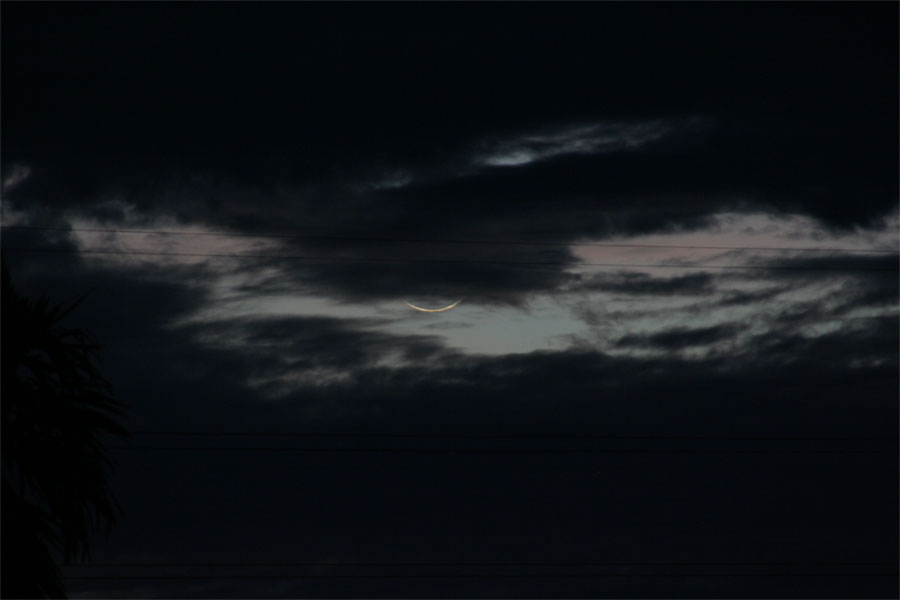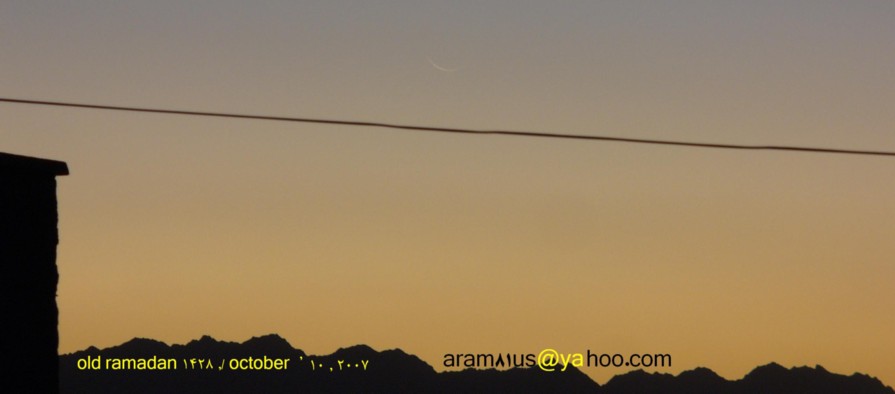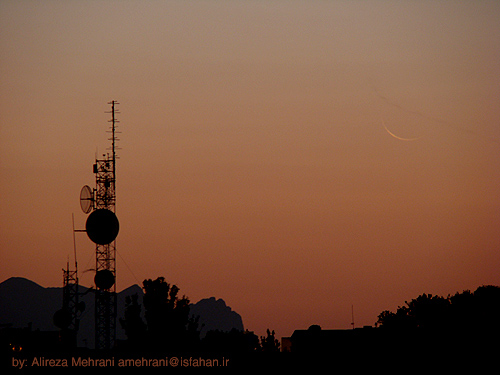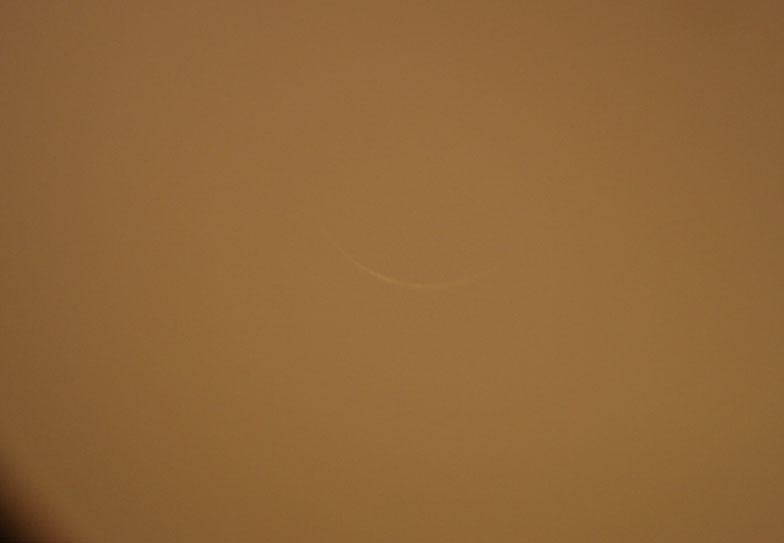Visibility of Shawwal Crescent
(1428 AH)
- When to Observe Shawwal Waxing (NEW) Crescent ?
- Shawwal Waxing (NEW) Crescent Observation Results
- The OFFICIAL First Day in Different Countries
- Shawwal Beginning World Map
- ICOP Official Statement
- On 28 Ramadan Oman Announced that Eid Will Be on Saturday!
- When to Observe Ramadan (OLD) Crescent ?
- Ramadan Waning (OLD) Crescent Observation Results
The geocentric conjunction (Geocentric New Moon) will occur Inshalla on (Thursday 11 October 2007) at
05:01 UT.
Sighting the new crescent on (Thursday 11 October 2007) and on (Friday 12 October 2007) is shown in the below graphs using the program Accurate Times by Mohammad Odeh according to Odeh criterion. Where:-
According to the Universal Hejric Calendar (UHC), which is based on the calculated crescent visibility, the start of this month in the Eastern Region will be on Saturday 13 October 2007, and in the Western Region will be on Friday 12 October 2007.
- Results of seeing the crescent, and the first day of the month in different countries will be added here Inshalla as we receive the reports from ICOP's members. If you wish to be a member in ICOP, or to know more about it, kindly click here.
So far, the earliest sighting of the crescent (After Sunset) was on Friday by ICOP members Mr. Sam De Francesco and Mr. Afroz Ali from Australia, the crescent was also seen on this day from Sri Lanka, Iran, Oman, Senegal, Nigeria and USA
ICOP member Mr. Jim stamm from USA reported that he was able to see the crescent on Thursday before sunset using 8" telescope, but he was not able to see it after sunset.
Thursday 11 October 2007:
Surface conditions at 14:00 Local Time
Topocentric and local time values from “Accurate Times”:
Crescent first observed through 8” SC telescope:
Crescent steadily observed through 8” SC telescope:
I began observing at 13:00 local time, under ideal conditions. There were the usual teasers, and some were convincing enough to keep me at the eyepiece. At 14:40 I saw what looked like a short arc, and when I centered the image, it was still there! However, the image would never stay for more than a few seconds, and at one point when I “positively” knew where it was, it wasn’t there. So I ran through the procedure again, and when the time came (16:50), a ten degree image of the crescent was in the center of the eyepiece. It remained steady. I left the telescope to get this report out.
When I returned to my scope after submitting the first part of the report, the image was still in the field of view. After a few minutes, it began to fade, and once it was gone, I was never able to acquire it again. I would estimate that time to be about 1710 (Local). I followed the empty field all the way until Moonset.
The most interesting aspect of the observation was the expected contrast. The atmosphere was exceptionally clear, and I had a deep blue field in my 50x eyepiece at less than 10 degrees from the sun. I used Venus, Saturn, Jupiter, and Regulus to set the focus on the scope and tweak the setting circles. I then ran through several off- setting sequences with the sun to acquire the precise field of the Moon's crescent. The first couple of runs produced nothing but the "teasers" mentioned in the first part of this report. I don't think any of them were images of the crescent. These observations were when the Moon had an altitude of 35-43 degrees. Only after the Moon had dropped to an altitude of about 34 degrees did I get images that looked like genuine crescent images. This is AFTER the sky color had "degraded" from a deep blue to a silvery blue. During the deep blue phase I had the feeling that the sky was blue, but the "noise" from my retina was more like the gray that I expected the crescent to be. The acquisition of the first images was when the whole field was like the "noise". I had lost the expected contrast with the blue sky that I had aimed for by beginning the observations at 1300. Then after the Moon had dropped to about 13 degrees, I acquired a steady stable image of the crescent. The blue background was gone by then.
Although this is what I had observed during previous observations, it was contrary to what I expected. The sky was still superb, but I thought that the color of the reflected sunlight against the bluest of background skies would give me the best chance of seeing the short crescent. This is not what happened.
What did happen? Are the colors deceiving my expectations of contrast? Is there a filter quality of the atmosphere that may be enhancing the contrast at a lower altitude? Is there some kind of relationship between scattered sunlight and the reflected light of the crescent? Help!!
Observer(s): Jim Stamm
Note from ICOP: Kindly highly notice that the observer was able to see the crescent before sunset using 8" telescope, but he was NOT able to see the crescent after sunset even by telescope.
Friday 12 October 2007:
We could see this new moon crescent on Friday Oct. 12th .2007(21/7/1386 according to Calendar of Iran), in a region located 40 kilometers far from shahreza to Semirom called khorusgelu with these geographic coordinates:
The observation was started at 16:30
- Number of our group: 67 persons
-Sun set according to software: 17:35
- The first observation parameters:
The sky in the west horizon was semi-cloudy with dust and because of mountains it was hided about 2 degrees, but the two girls observed the crescent among dusts for about 1 minute. The rest of members couldn't see it. I confirmed it and reported to our country's leadership office. "
Yesterday (Friday ,Oct. 12, 2007), I went to Jabal Hafeet (a moderately high mountain) near Al-Ain armed with a 12-inch telescope with a sophisticated LPI camera to spot the crescent Moon which was about 32 hours old. The sky was perfect for a clear observing session, but the western horizon (the most important spot for the crescent) was awfully dusty. After setting my telescope, time was up to observe. My first target was not the Moon, but Mercury. I locked into it with ease: here is Mercury shining high above the western horizon. With a low power, I was able to see it like a bright spot. If it were not for the wind, I would have tried a high power and see it as a CRESCENT. But it was quite windy and the image was not still even with a low power. Then next, my important target was the Crescent Moon. Impossible to see with a naked eye, I commanded my telescope to go and get
it. It obeyed my command within a fraction of a second since the Moon was not very far away from Mercury this past Friday. With a confidence of a dedicated and a professional astronomer, I looked through the eyepiece of my telescope to see the crescnet "et voila": NOTHING. With an age of 32 hours, elevation of 8 degrees, the crescent Moon was impossible to see with a quite sophisticated telescope because of just one reason: the western horizon was so polluted that even the Sun disappeared two minutes before its real setting time. This was the situation Friday while the Moon well up in the sky, but how was the situation Thursday with the moon well below the horizon. I tried several times to spot the crescent Moon, but all trials failed. I decided then to break my fast and be happy that I fasted 30 days. So, the question again is what did these Saudis see? I truly believe that they have seen a crescent, not a crescent Moon but a crescent Mercury. And if they did really observe a crescent Mercury, they must be very good at it and they should share their experience with all of us in terms of always seeing the impossible."
Thursday 11 October 2007:
Friday 12 October 2007:
Saturday 13 October 2007:
Sunday 14 October 2007:
Kindly note that the beginning of Shawwal is determined based on the OFFICIAL announcements by Islamic countries, or as announced by the major Islamic societies in non-Muslim countries. Other unofficial beginnings by Muslims groups in Muslims or non-Muslim countries are not considered in this map.
In a great step, and for the first time it happens an Islamic country (which adopts the actual sighting of the
crescent) announces officially the beginning of Ramadan or Shawwal even
before the 29th day! They said in the official announcement as a conclusion:
Since the astronomical calculations proved that the Moon will set before
the Sun in Oman, and since we reject claims of sighting when the
crescent is impossible to be seen, then Friday is the completion of 30
Ramadan and Saturday will be first day of Eid!
This is the first time we witness such a great step! We used to hear some
announcements about the beginning of Ramadan/Shawwal in advance when
crescent sighing is not required (such as Libya), but this is the first
time a country which adopts actual sighting of the crescent announces in
advance the beginning of the month! We strongly believe that this is the
correct thing to do!! Why should we ask the people to go to look for the
crescent when we know that there is no moon!! We MUST congratulate Oman for this great step!
Kindly Click Here to read ICOP official statement on this regard (Arabic).
The geocentric conjunction (Geocentric New Moon) will occur Inshalla on (Thursday 11 October 2007) at
05:01 UT.
Sighting the OLD crescent on (Wednesday 10 October 2007) is shown in the below graph using the program Accurate Times by Mohammad Odeh according to Odeh criterion. Where:-
When to Observe Shawwal Waxing (NEW) Crescent ?
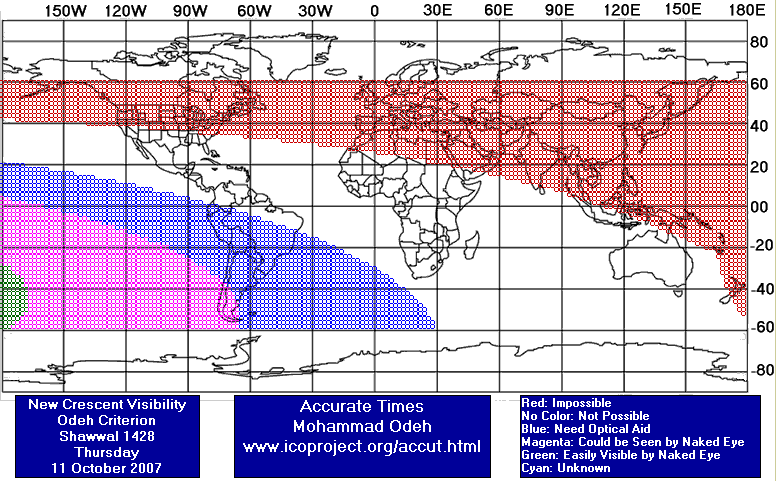


Shawwal Waxing (NEW) Crescent Observation Results
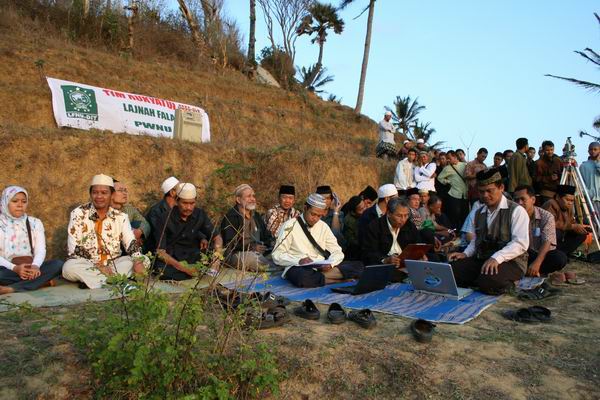
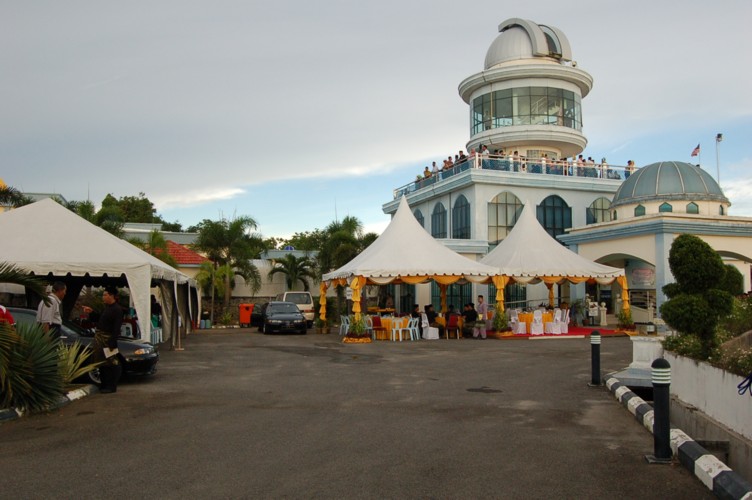
Location = Tucson, Arizona (USA)
Longitude = 110.9645 W
Latitude = 32.4204 N
Elevation = 842 meters
Time Zone = -7.0 hours
Temperature = 90 degrees Celsius
Relative Humidity = 9 percent
Sunset (at sea level) = 18:02
Moonset (at sea level) = 18:07
Time from new moon at 18:04 = 19 hr. 41 min.
Moon lag time = 5 minutes
Relative Altitude = 1.14 degrees
Elongation from sun = 9.80 degrees
Crescent width = 13 arcseconds
Illumination = 0.73 percent
Time = 14:40
Altitude = 34.2 degrees
Time = 16:50
Altitude = 12.9 degrees

"From: The Astronomy and Geophysics Centre Of Shahreza
Reporter: Hossein Janghorbani, manager of the center
(This Centre is located in Iran, Isfahan, Shahreza)
Lat: 31° 38' N
Lon: 51° 42' E
Ele: 2581 m
Tz: +3.5
- Our equipments:
* four binoculars 15 × 70 installed on tripod
* one binoculars 30 ×60
* one binoculars 40 ×150
* one compass
-Sun set observed: 17:32
By: two girls, Parisa Naderi and Batul Ahmadi
Through: 15x70 binoculars
Time: 17:27 LT ( 5 minutes to sun set)
Moon Alt: 5.225
Azimuth: 245.990
Elongation: 15.292
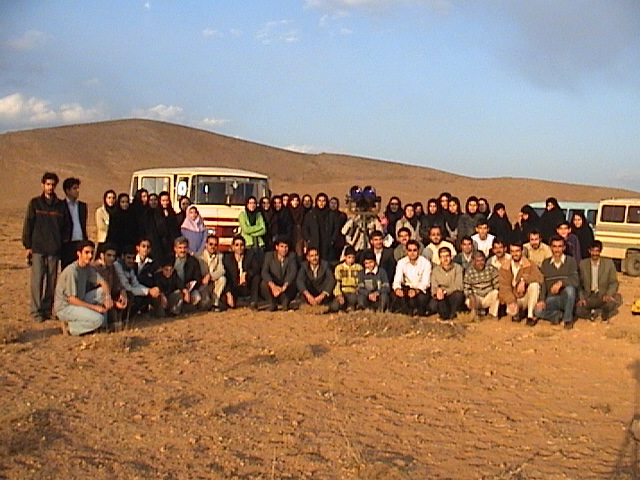
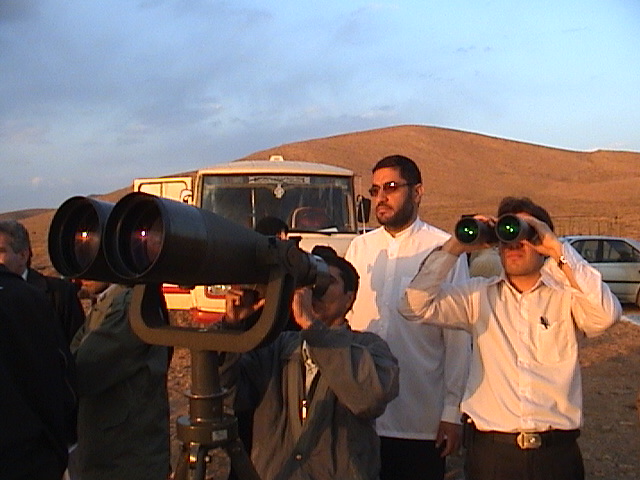


The OFFICIAL First Day in Different Countries

Shawwal Beginning World Map


ICOP Official Statement

On 28 Ramadan Oman Announced that Eid Will Be on Saturday!


When to Observe Ramadan Waning (OLD) Crescent ?

